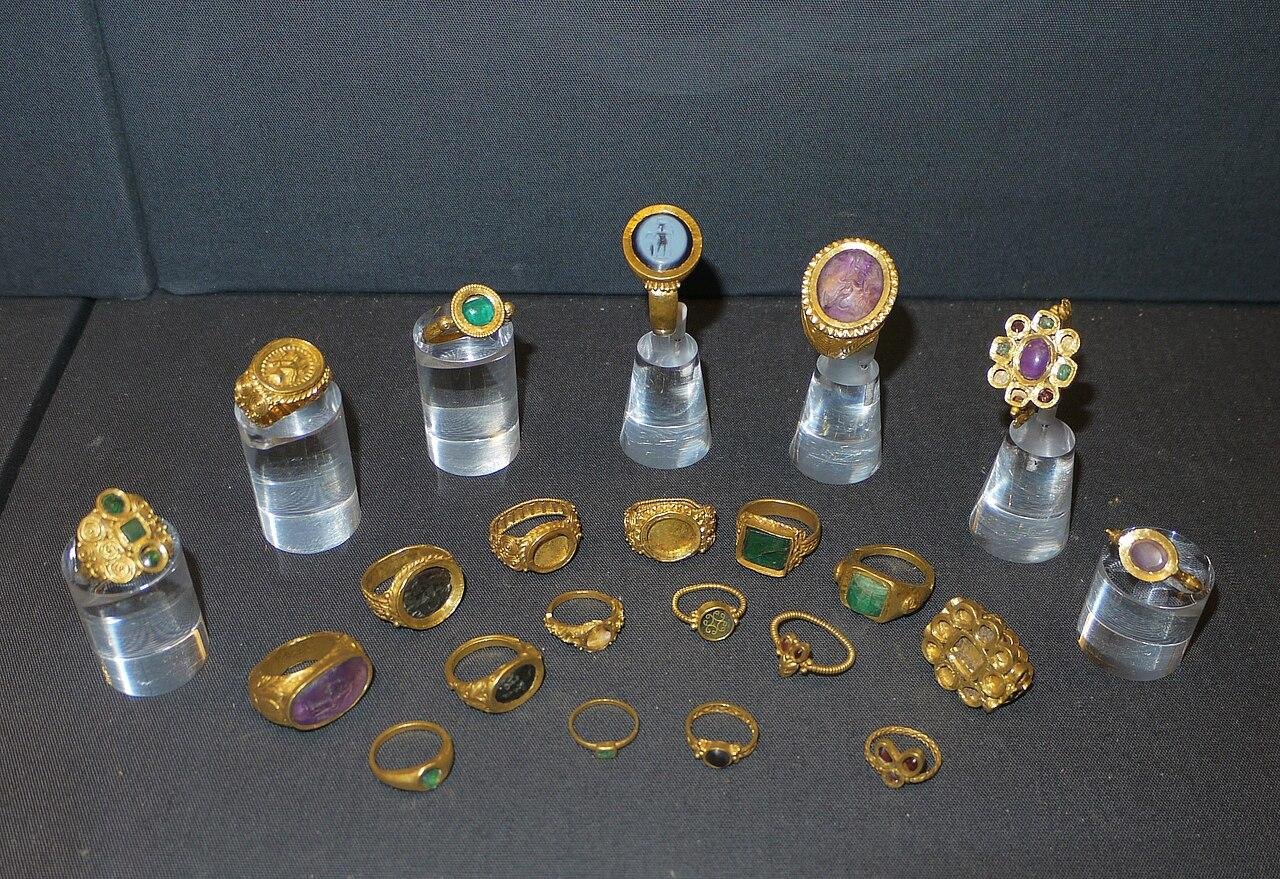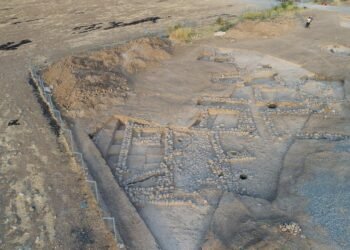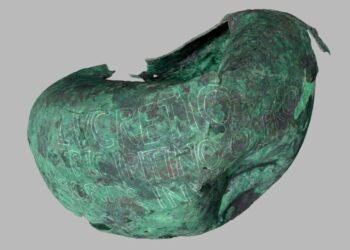A new study of a Roman treasure unearthed in Thetford, East Anglia, challenges centuries of hypotheses about the decline of paganism in Britain. In research published in the Journal of Roman Archaeology, Professor Ellen Swift of the University of Kent argues that the Thetford hoard was buried in the early to mid-5th century CE—several decades later than experts had previously supposed.

The Thetford hoard, which was discovered in 1979 by a metal detectorist who was trespassing on a building site at Fison’s Way on Gallows Hill, contains 81 objects. These include 22 gold finger rings, a variety of other gold jewelry, and 36 silver strainers or spoons. The treasure is now housed in the British Museum.
Initial work placed the hoard in the late 4th century, but Professor Swift’s latest findings argue that the majority of the pieces were made and used well into the 5th century. Professor Swift told Cambridge University Press that inscriptions on the spoons and other artifacts found at the site show that it was still a center of pagan worship during this period.
The hoard is compared to other artifacts found across the Western Roman Empire, including artifacts from the Hoxne treasure—another 5th-century treasure also housed in the British Museum. At least 17 items in the Thetford hoard can be matched with 5th-century styles, materials, and production techniques evident in continental European finds.

The jewelry derives from various sources. The finger rings most likely came from northern Italy. A cone necklace with cone-shaped beads points to the Lower Danube. Despite such variety, most of the jewelry shows a shared style of the Roman elite, pointing to the fact that some areas in Britain still adhered to a shared Mediterranean culture despite the fall of the Roman state.
Swift says that the economic importance of the hoard increased during its final phase. The shift came after the fall of Roman rule in Britain, when local centers of power would have stepped in to fill the gap. “The site’s economic assets, indicated by the value and variety of the hoard, also show that it may have wielded significant power and authority locally,” Swift said.
The hoard burial near post-Roman timber structures and other discoveries nearby, including coin hoards and shrine remains, support the hypothesis that Thetford might have been a pagan religious center in times of political and social turmoil.






















Disclaimer: This website is a science-focused magazine that welcomes both academic and non-academic audiences. Comments are written by users and may include personal opinions or unverified claims. They do not necessarily reflect the views of our editorial team or rely on scientific evidence.
Comment Policy: We kindly ask all commenters to engage respectfully. Comments that contain offensive, insulting, degrading, discriminatory, or racist content will be automatically removed.